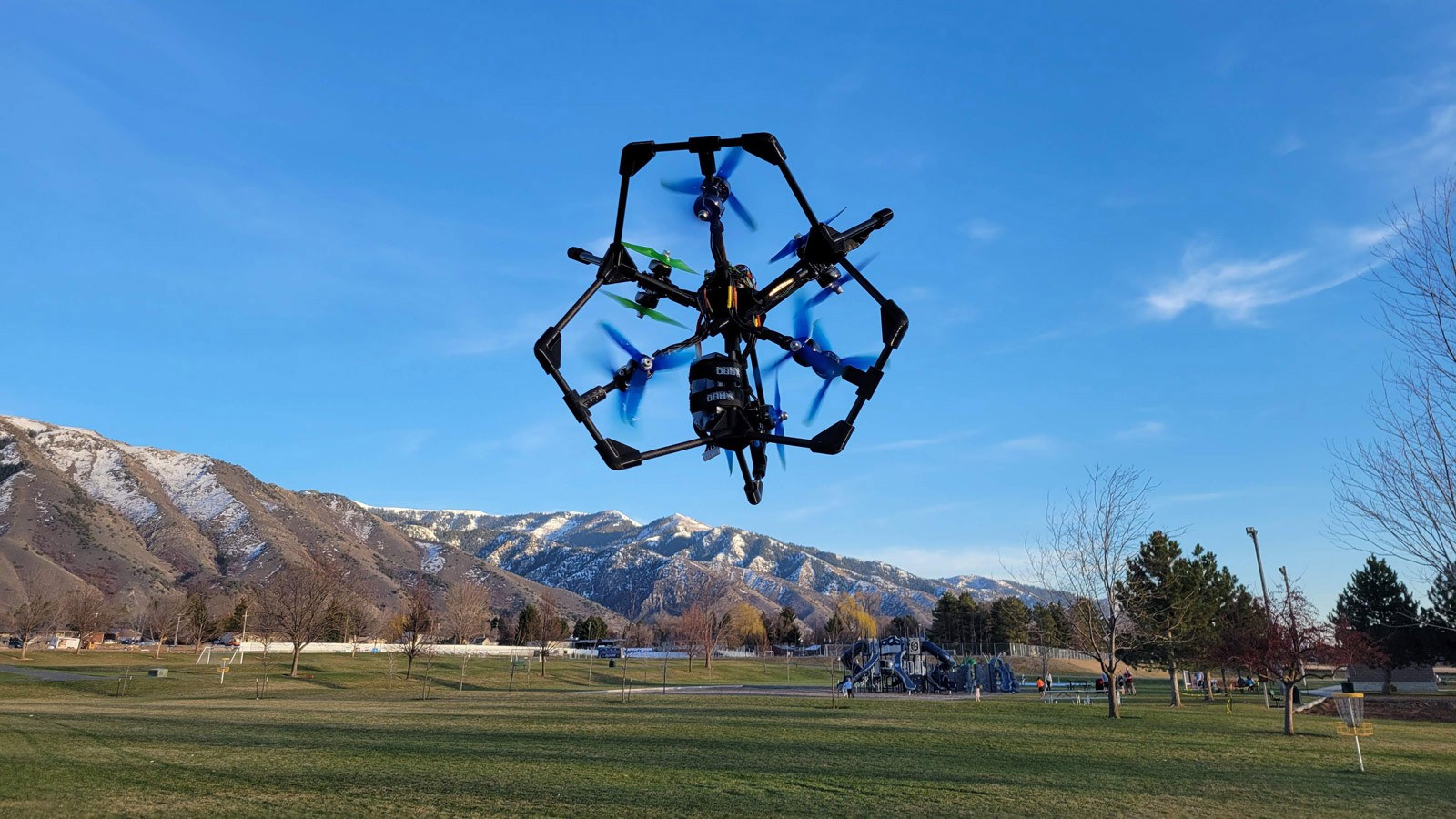Electrical Engineering Student Wins $25,000 Drone Competition
By Anessa Pennington |
Engineering undergad Kevin Plaizier won $25,000 for designing a drone. He's been an active member of the AggieAir program for over two years and has been flying drones since high school. (Photo: Matt Jensen).
Utah State University electrical engineering junior Kevin Plaizier won $25,000 after placing first in an international drone design contest.
Established by actor Terrence Howard, the Lynchpin Contest challenges participants to create software and hardware systems for a "Lynchpin Drone." A Lynchpin Drone has a unique shape made of six connected hexagons, which gives it more freedom of movement than a typical drone. The drone also needed to include the following capabilities:
- Rotate into any orientation while maintaining position
- Move in any direction regardless of its orientation
- Pilot must have control of the orientation and position
- Control must be independent, meaning if the pilot makes the drone ascend, the drone will move upwards relative to gravity, even if the drone is upside-down.
Plaizier is a true drone enthusiast: he has been flying drones since he was a teenager, he has worked as a research assistant for AggieAir for 2.5 years, and he has been writing code for racing drones for since 2019. So when he first heard about the contest from a YouTube video last November, he immediately signed up to participate.
“I was looking at all the comments and everyone seemed quite negative, saying, ‘no one can do it, it'll be way more expensive to do this.’ But I thought, ‘I can get it done,’ so I decided to give it a try and see what I could do.”
In February, Plaizier had a one-on-one Skype call with Terrence Howard, where the actor said he hoped someone would build a drone with 12 motors instead of the standard six. With about a month and a half before he had to submit his final model, Plaizier made some big last-minute changes.
“I had the design made and a lot of the software written to do six motors, but he really wanted 12 motors, so I scrapped the design and rebuilt it,” Plaizier said.
Out of dozens of contestants, Plaizier was chosen as one of three finalists, including two others from Switzerland and Germany. He was the only one to build a 12-motor Lynchpin Drone, a feature that gave it more stability than the other finalists’ models. That feature won him the competition.
“I was shocked,” said Plaizier. “But it’s also been cool to show that as an undergrad student that I’ve been able to do something like this.”
Plaizier was the only contestant to build a 12-motor Lynchpin Drone, a feature that won him first place.
WRITER
Anessa Pennington
Public Relations Specialist
College of Engineering
435-797-7512
anessa.pennington@usu.edu
CONTACT
Kevin Plaizier
Undergraduate
Department of Electrical and Computer Engineering
kevin.plaizier@aggiemail.usu.edu
TOPICS
Awards 690stories Engineering 334stories Student Success 295stories Drones 13storiesComments and questions regarding this article may be directed to the contact person listed on this page.









